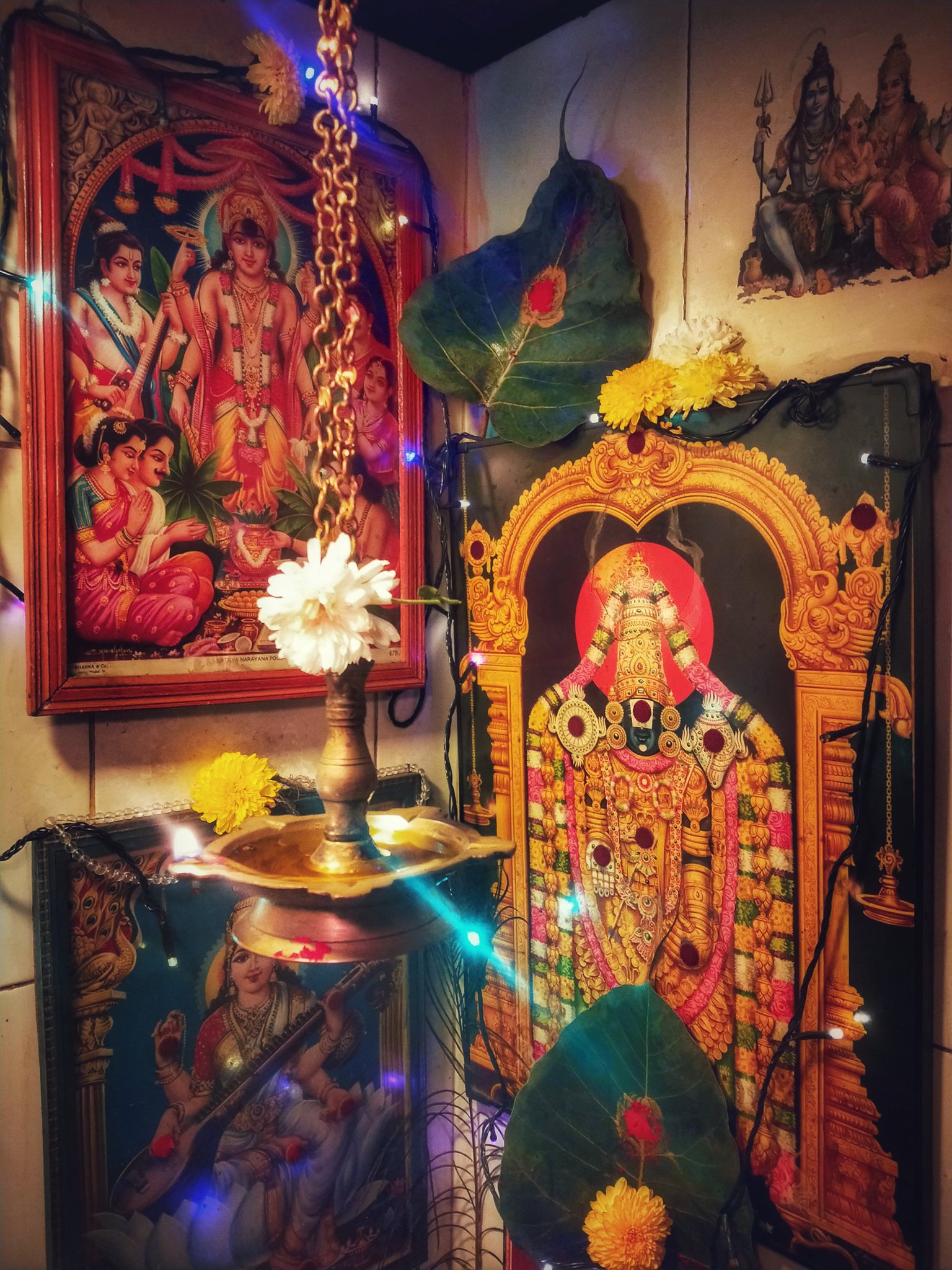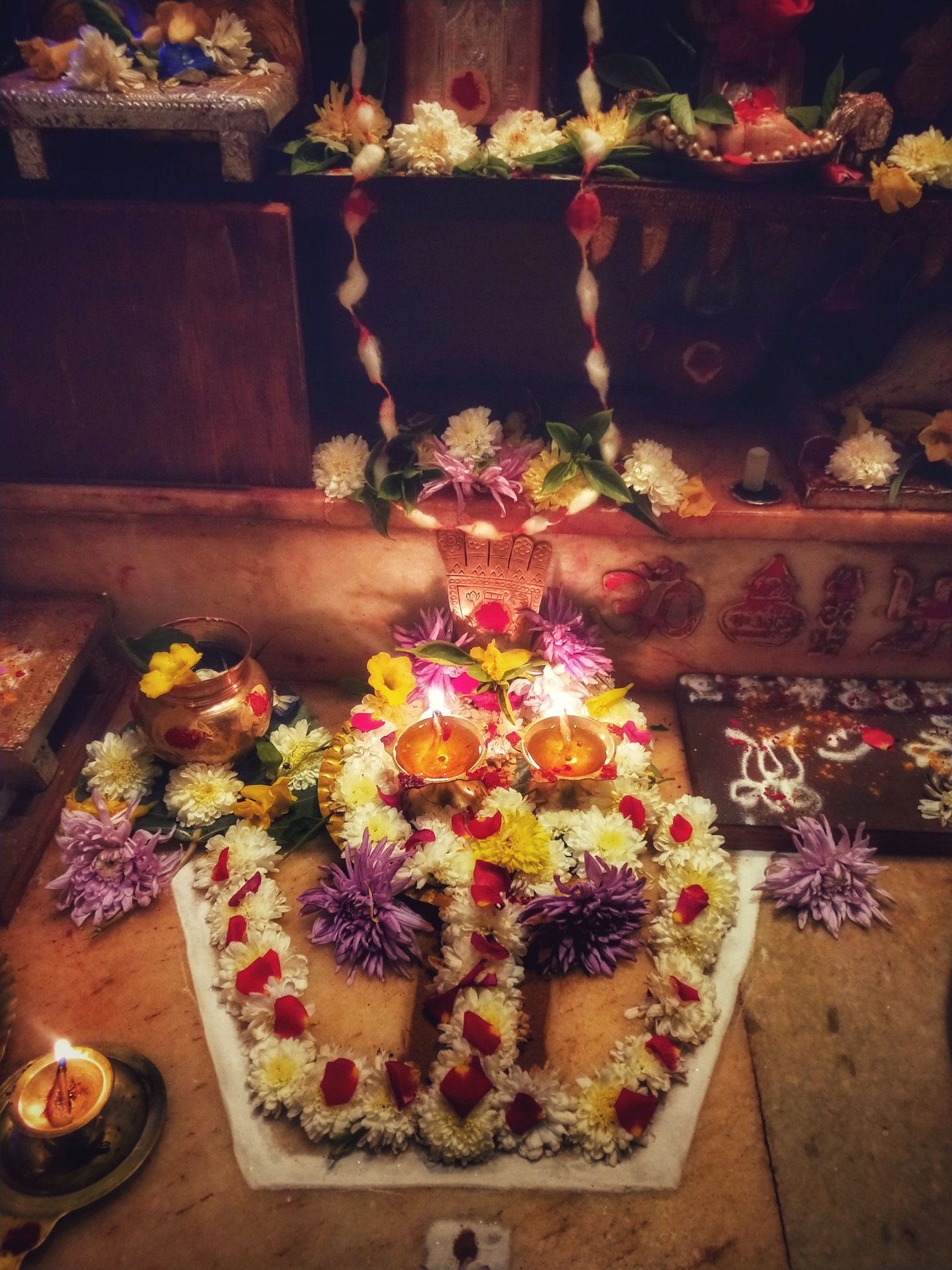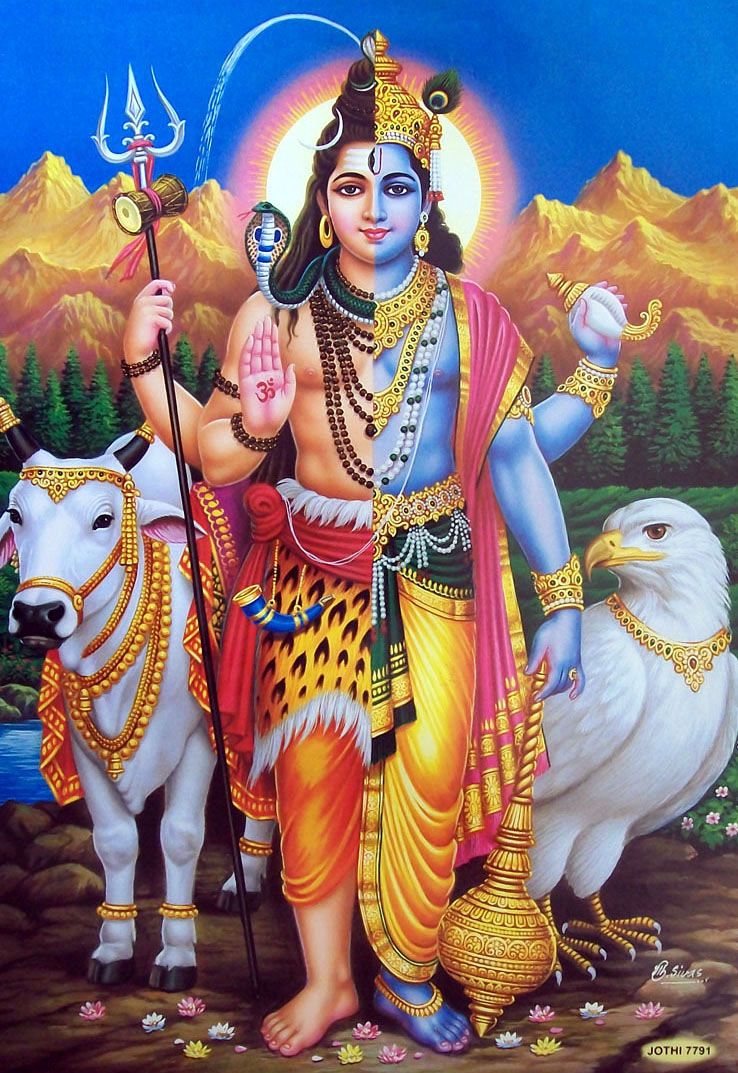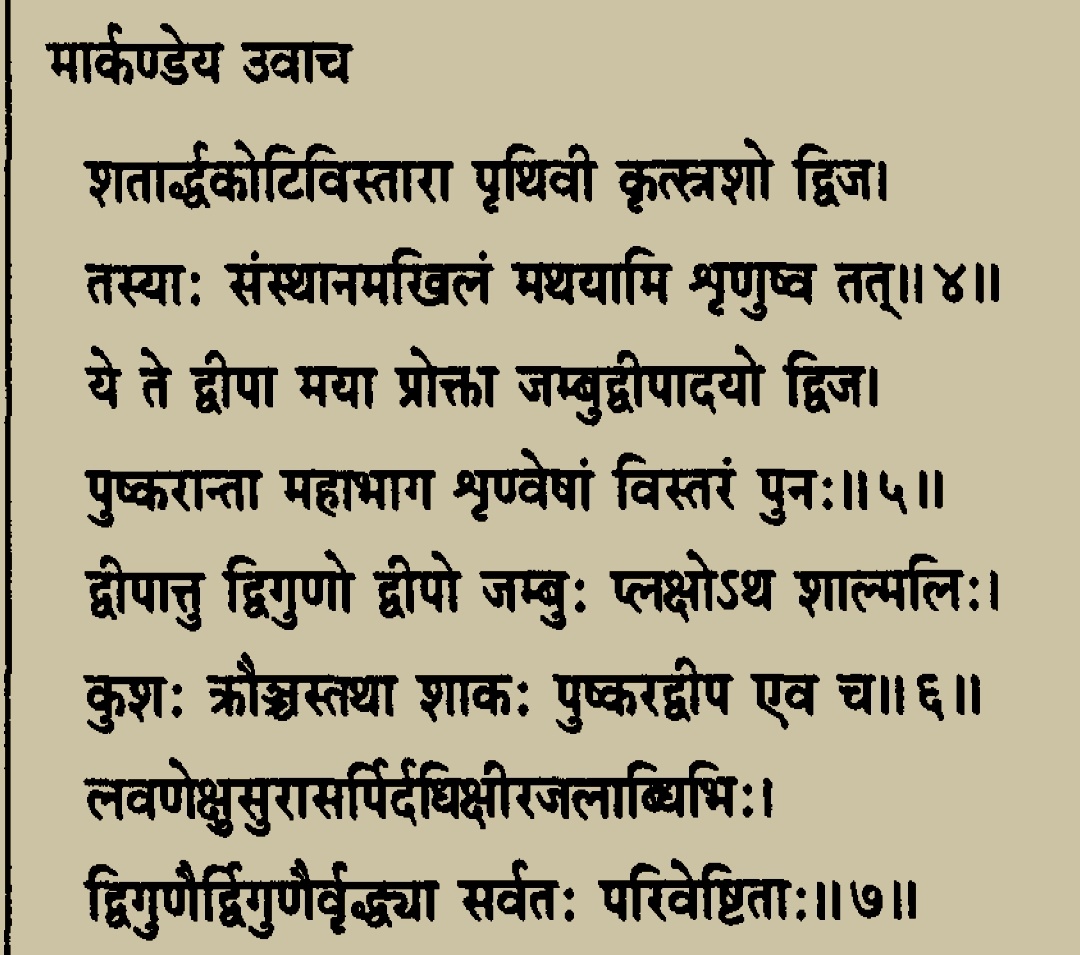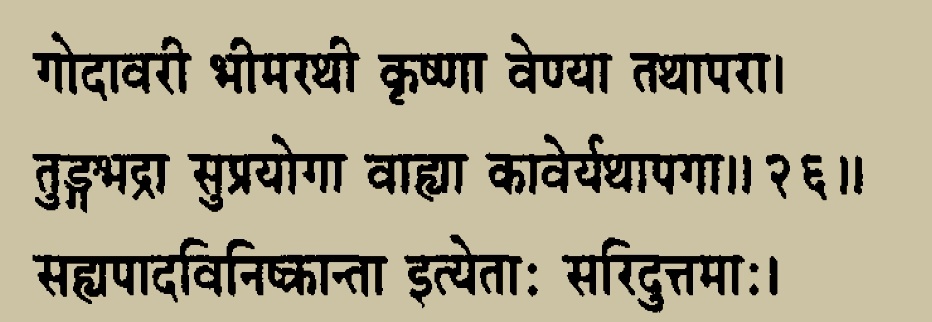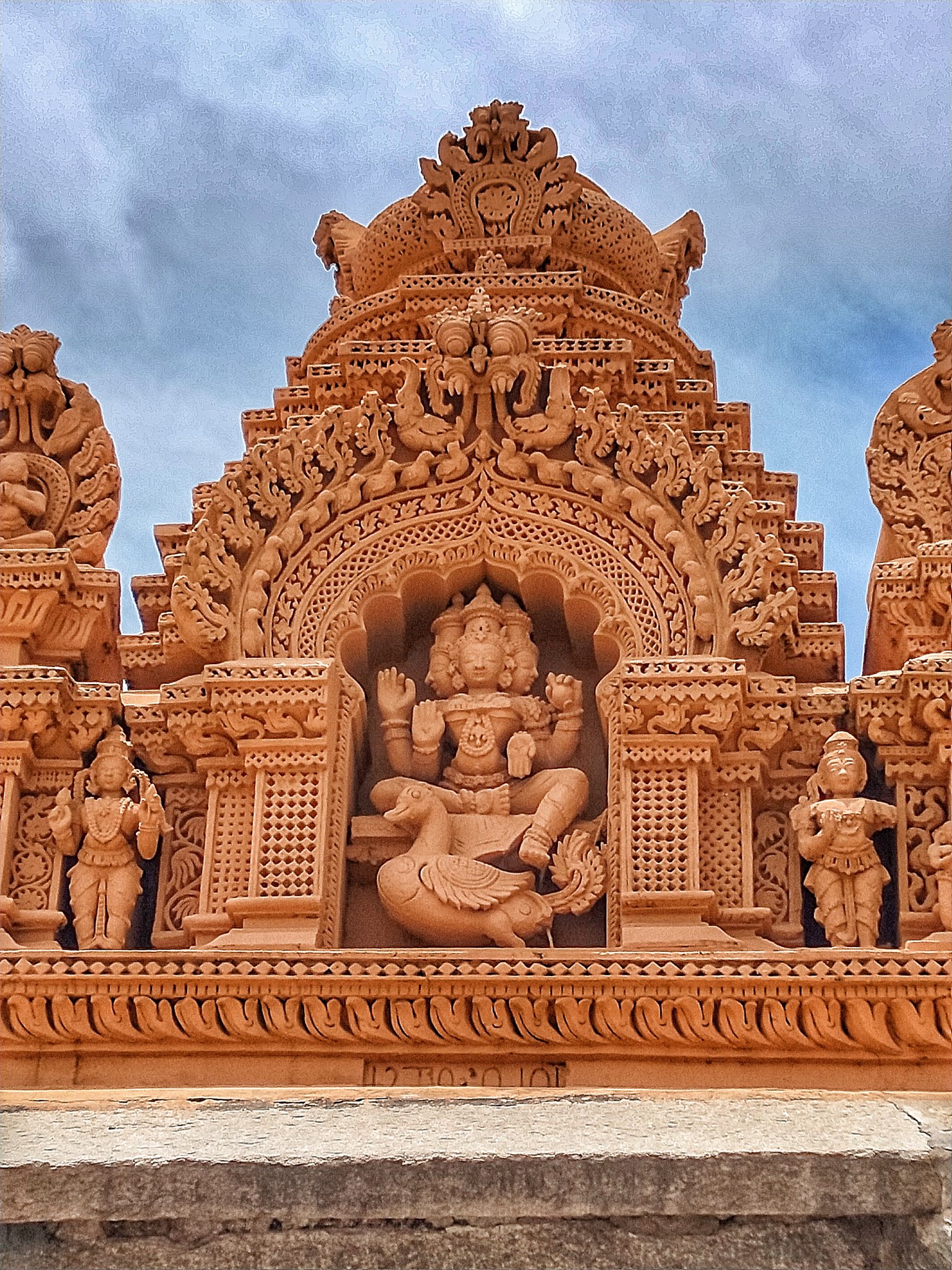 |
| From top left : Brahmani, Vaishnavi, Maheshwari, Indrani, Varahi, Kaumari, Chamunda |
Saptamatrikas in the Puranas
It is well known that after the slaying of Asuras Hiranyaksha & Hiranyakasipu by Maha Vishnu in his Varaha & Narasimha avatara, Hiranyakasipu's only son Prahlada, who was a great devotee & bhakta of Maha Vishnu renounces all concerns of worldly life. After Prahlada, it was Andhakasura who began ruling over the asuras. Like other asuras before him, he had an irresistible & mad desire to conquer the Devas & rule over all the 3 worlds.
In order to attain the powers needed to fulfill his desires, Andhakasura would go on to perform a long series of severe austerities in order to please the creator of the universe, Lord Brahma. The latter pleased by Andhakasura's devotion & dedication would grant him some very powerful boons including that of creating maya & immortality(with an exception that he could be slayed only by Lord Shiva)
Filled with arrogance & pride of being nearly invincible, Andhakasura launches a ferocious attack on the Devas. All the Devas now defeated & consumed by fear turn to Lord Shiva at Kailasa for help. Even as Lord Shiva was listening to their woes, Andhaka appears at Kailasa to abduct Goddess Parvathi.
Angered by this, Lord Shiva gets ready to fight Andhaka. A ferocious battle involving other Devas including Maha Vishnu ensues. When Shiva finally manages to wound the evil asura, making him bleed, a very curious thing happens. Each time a drop of Andhakasura's blood made contact with the ground, that droplet would turn into a form of Andhaka himself. In no time there were 1000's of Andhakasuras surrounding the Devas.
Lord Shiva now identifies the original Andhakasura & pierces his body with the Trishula. Meanwhile Maha Vishnu destroys with his Sudarshana Chakra the secondary Andhakasura's that kept appearing as a result of his blood falling on the ground. To stop the blood from falling on the ground, Lord Shiva created out of the flame that was issuing from his mouth a Shakti called Yogeshwari. Brahma, Vishnu, Indra, Varaha, Skanda & Yama too send their Shaktis in order to catch the blood of Andhaka from touching the ground.
These 7 female counterparts i.e. Brahmani, Vaishnavi, Maheshwari, Indrani, Varahi, Kaumari & Chamunda together came to be known as the Saptamatrikas. The Saptamatrikas are armed with the same weapons,wear the same ornaments, ride the same Vahanas & carry the same banners corresponding to their male counterparts.
The 7 Matrikas caught all drops of blood as they fell in the batlle between Lord Shiva & Andhakasura, thereby stopping the further multiplication of the evil asura. Lord Shiva finally with the help of Saptamatrikas slays Andhakasura.
Significance of the Saptapatrikas according to the Puranas
In the Maha Puranas, the number of Matrikas is placed as 7. Only exception is the Varahapurana which places it at 8. It includes among them goddess Yogeshwari mentioned a few paragraphs above. According to the Varahapurana the story of Andhakasura & the Matrikas is an allegory. It represents Atma Vidhya or spiritual wisdom as warring against Andhakara(the darkness of ignorance) of which Andhakasura was a personification of.
The spirit of Vidhya, personified by Lord Shiva fights with Andhakasura, the darkness of Avidhya. The more this is attempted to be attacked by Vidhya, the more does it tend to increase for a while; this is represented by the multiplication of the figures of Andhakasura.
Unless the 8 undesirable qualities of Kama(desire), Krodha(anger), Lobha(covetousness), Mada(pride), Moha(illusion), Matsarya(fault finding), Paisunya(tale-bearing) & Asuya(envy) are completely brought under control of Vidhya & kept under restraint, it can never succeed in defeating Andhakara.
Iconography of the Saptamatrikas
The Agama shastras lay down specific rules on how the 7 Matrikas have to be depicted. They state that Brahmani should be depicted like Brahma, Vaishnavi like Vishnu, Maheshwari like Maheshwara, Indrani like Indra, Varahi like a short woman with angry face, Kaumari like Skanda & Chamunda as a terrific woman who should possess a dark complexion & have 4 hands, she should wield the Trishula in one of her hands & carry a Kapala in another.
All the Matrikas are to be seated images & should have two of their hands held in Varadha & Abhaya mudras, while the other two hands should carry weapons corresponding to their male counterparts. They are to be shown seated upon in padmasanas in sculptures.
Saptamatrika iconography was widespread throught ancient Bharatavarsha. From Lalitaditya's Kashmir to the southernmost realms of the Pandyas, from the westernmost frontiers of ancient Bharat once controlled by the Pratiharas to the easternmost ruled by the Palas. The Saptamatrika was a pan-Bharat iconography & still is. Though much of the sculptures have been lost to barbaric turushka invasions in the west, north & east, they continue to be well preserved in Southern Bharat.
We'll have a look at few of these sculptures from the Srikanteshwara Swamy Devastana at Nanjangudu near Mysuru in Karnataka.
1) Brahmani
Brahmani or Brahmi, the first Matrika is the shakthi of Brahma. She is golden in complexion, having 4 faces & 4 hands. In her upper left hand she carries a kamandalu & in the upper right hand an Akshamala. She holds the Abhaya & Varada mudra with front hands. Her head is adorned with the Karanda-makuta. She is seated in Padmaaasana under a Palasha (Butea) tree. Her Vahana is a Hamsa (Swan)
2) Vaishnavi
Vaishnavi. She is the shakthi of Shri Maha Vishnu. She is dark in complexion & wears bright yellow clothes. She has 4 arms. The upper arms hold a Chakra & Shanka just like Vishnu. The front arms are in the Abhaya & Varada mudra positions. Her head is adorned with the Kirita-makuta. She is seated in Padmaaasana under a Rajavriksha (Cassia) tree. Her Vahana is the Garuda (Eagle)
3) Maheshwari
Maheshwari. Also known as Rudrani is the Shakthi of Shiva. She is white in complexion & has 3 eyes. She has 4 arms. Upper arms hold a Trishula & a Damru (notice the sarpa curled around it) She holds the Abhaya & Varada mudras with front arms. Her head is adorned with the Jata-makuta just like Shiva. Her Vahana is a Vrishabha (Bull)
4) Indrani
Indrani. She is the Shakthi of Indra. She is dark red in colour. Indrani is depicted with 4 arms. In two of her upper hands she carries the Vajra (thunderbolt) and the shakthi weapon. While the lower two hands hold Abhaya & Varada mudra. Her head is adorned with the Kirita-makuta. She is seated in Padmaaasana under a Kalpaka tree. Her Vahana is an elephant.
5) Varahi
Varahi. She is the Shakthi of Varahaswamy. Varahi is shown with the face of a boar & having dark complexion. She is also called Dhumavati. She carries a hala (plough) & musula (pestle) in her upper hands, while the front hands hold the Abhaya & Varada mudra. Her head is adorned with the Karanda-makuta. She is seated in Padmaaasana under a Kalpaka tree as well. Her Vahana is a buffalo.
6) Kaumari
Kaumari. Also known as Ambika. She is the shakthi of Skanda. Her complexion is golden yellow & she is dressed in red garments. Kaumari has four hands & carries the Shakthi weapon & an Ankusha. The front two hands gesture Abhaya & Varada mudras. Her head is adorned with a makuta bound with Vaasika. She is seated in Padmaaasana under an Udumbara (Fig) tree. Her Vahana is a peacock.
7) Chamunda
Chamunda. Also known as Chamundi, she is the terrific form of Devi Chandi. She is red in colour & has 4 arms & 3 eyes. She hold the Khatvanga & a severed head with her upper arms. While the lower arms in the Abhaya & Varada mudra positions. She wears a garland of skulls(mundamala) in the manner of the Yajnopavita & is seated in Padmaasana under an Udumbara (Fig) tree. She wears in her ears kundalas made out of conch shell. At her feet is a Preta (corpse).
Saptamatrika Panel
The Saptamatrikas are almost always flanked on either side by Veerabhadra & Ganesha. Veerabhadra is depicted with 4 arms & 3 eyes & has a very pacific look. He is shown wearing the jata-makuta. Veerabhadra is white in colour. In his upper arms he carries the sula & gada, while the the lower arms are shown holding the Abhaya & Varada mudra. Veerabhadra is seated in Padmaasana under a Banyan tree. Below is a classic depiction of the Saptamatrikas flanked on either side by Veerabhadra & Ganesha. The panel is from the Rameshwara Temple at Keladi in Karnataka. I've written a post on this Temple which can be read
HERE
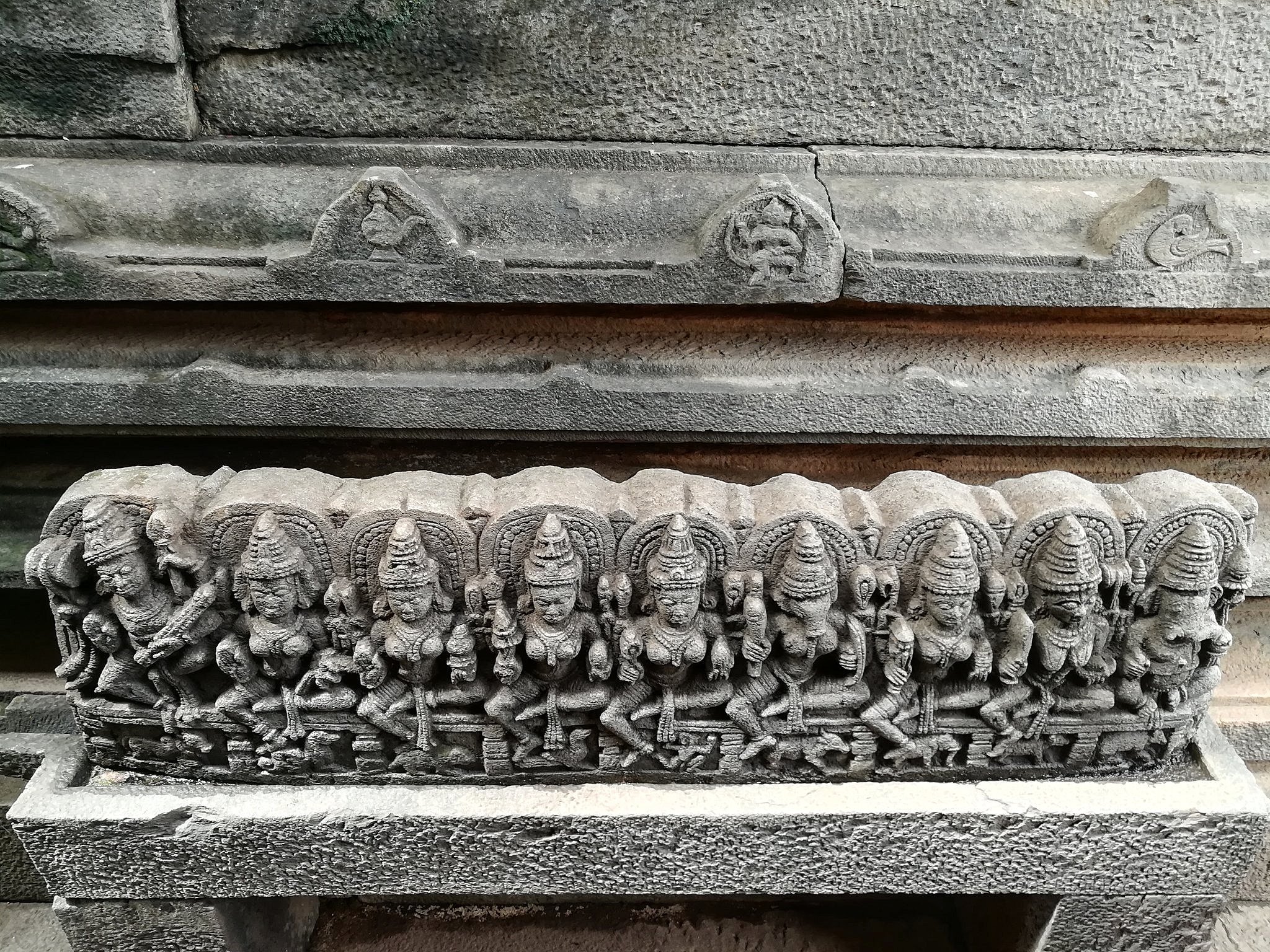 |
Saptamatrika panel
|
400+ year old panel of Saptamatrikas from the Keladi Rameshwara Temple near Sagara, Karnataka. From left : Veerabhadra, (Brahmi, Maheshwari, Kaumari, Vaishnavi, Varahi, Indrani, Chamundi) & Ganesha. If observed closely one can also spot their Vahanas carved below them.
References:Varaha & Kurma Purana by Motilal Banarsidass Publication.
Elements of Hindu Iconography by TA Gopinath Rao.
 Before narrating the origins of Ekadasi, Shri Krishna explains to Yudhisthira the benefits to be had by keeping a fast on Ekadasi. Krishna says the one who keeps a fast on Ekadasi accrues more punya than performing the Ashvamedha.Krishna says keeping a fast on Ekadasi is 100 times more meritorious than giving Gau-dhana to a Brahmana who has mastered the Vedas. Krishna says those who fast on the Ekadasi day are equal to those in whose bodies live the three deities Brahma, Vishnu & Maheshwara.
Before narrating the origins of Ekadasi, Shri Krishna explains to Yudhisthira the benefits to be had by keeping a fast on Ekadasi. Krishna says the one who keeps a fast on Ekadasi accrues more punya than performing the Ashvamedha.Krishna says keeping a fast on Ekadasi is 100 times more meritorious than giving Gau-dhana to a Brahmana who has mastered the Vedas. Krishna says those who fast on the Ekadasi day are equal to those in whose bodies live the three deities Brahma, Vishnu & Maheshwara.

